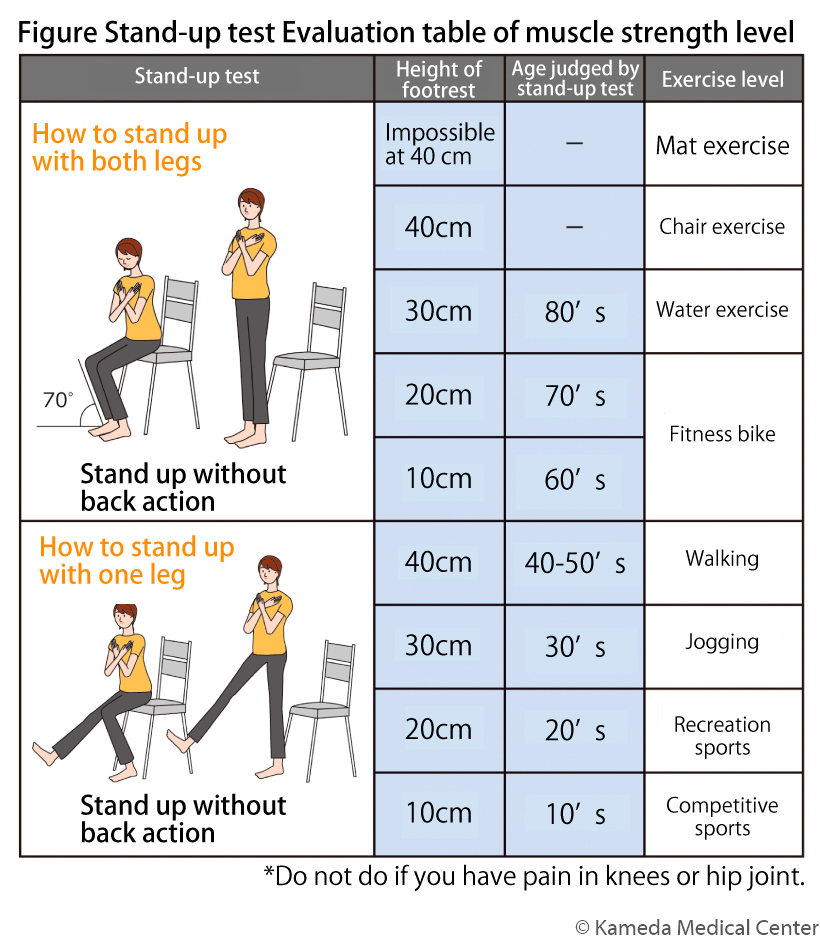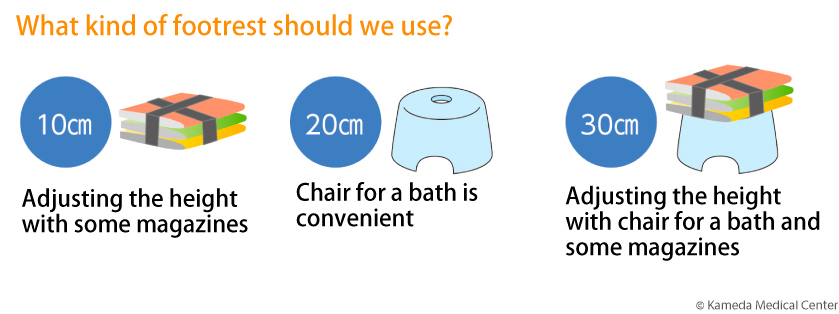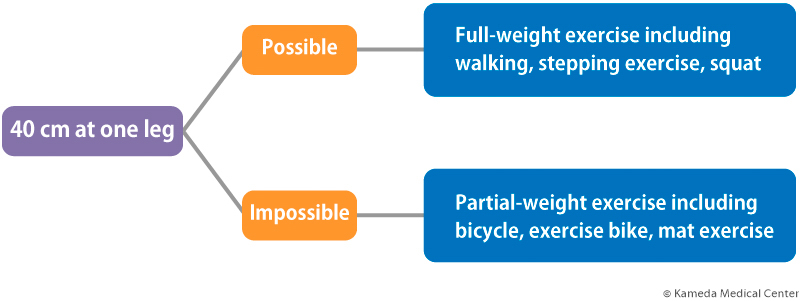10.Lymphedema and weight control: (1) body composition and exercise strength
The outpatient service of lymph care in Kameda General Hospital aggressively provides a guidance of not only compression therapy and lymph drainage but also exercise therapy.
Causes of secondary lymphedema occurring after surgery of breast cancer or uterus cancer are condition of disease, infection (cellulitis), excessive burden on extremities, and obesity/weight gain. Obesity is not only a risk factor of lymphedema, but also is related with breast cancer. Weight gain occurs when calorie intake exceeds calorie consumption for a long time. Especially, persons requiring weight control should review life habits such as diet and exercise.
At first, it is better to know your body composition and exercise strength matching with yourself using a stand-up test.
Check item 1: Calculate body mass index (BMI) based on body height and body weight.
|
BMI |
BMI=□kg÷□m2 |
|
Desirable weight |
Desirable weight = (body height) m2×22 |
Desirable BMI is said to be between 18.5 and 25, and the healthiest BMI is 22.
In nutriology, 1 g of fat is calculated as 9 kcal. However, because fat in the body contains about 20% of fluid, 1g of fat in the body burns 7 kcal.
Calories necessary for losing 1 kg of fat are 7,000 kcal.
Therefore, calories necessary for losing 3 kg of fat are 21,000 kcal.
For 21,000 kcal, a plan is created to consume the difference between calorie intake and calorie consumption based on the target period.
The body-fat percentage of some patients exceeds 30% to 35% even if their BMI is 18.5 to 25 or lower. In such a case, muscle training is necessary.
Check item 2: Calculate lean body mass (LBM).
|
LBM |
LBM = body weight - {body weight × (body-fat percentage) × 0.01} |
Check item 3: Know proper exercise level knowing own leg strength.



If you cannot stand up from a height of 40 cm (a height of a typical chair) on one leg without backaction, caution is needed.
Standing up from a height of 40 cm on one leg means that there is no problem about full weight exercise such as "walking" and "stepping exercise." Conversely, if you cannot do it, you may lack muscle strength supporting body weight, and excessive walking may impose burdens on the joint.
According to a report, amount of activity decreases after diagnosis of cancer. Also, restricted daily life because of fear of lymphedema after surgery may result in insufficient exercise. Many reports showed that muscle training using upper extremities did not cause exacerbation of symptoms.
Exercise to lose body weight for prevention of lymphedema should be conducted in accordance with body condition with the above exercise strength.
However, patients with lymphedema should check for exacerbated heaviness in extremities on the next day after exercise, and should exercise in accordance with body condition. First, patients who sit for long time in daily life should shorten sitting time, and should gradually increase amount of activity.
This column explains that you should know your own body composition and muscle strength, whether you need to control body weight, and what proper exercise strength is.
Next column explains target setting and exercise in accordance with strength in details.